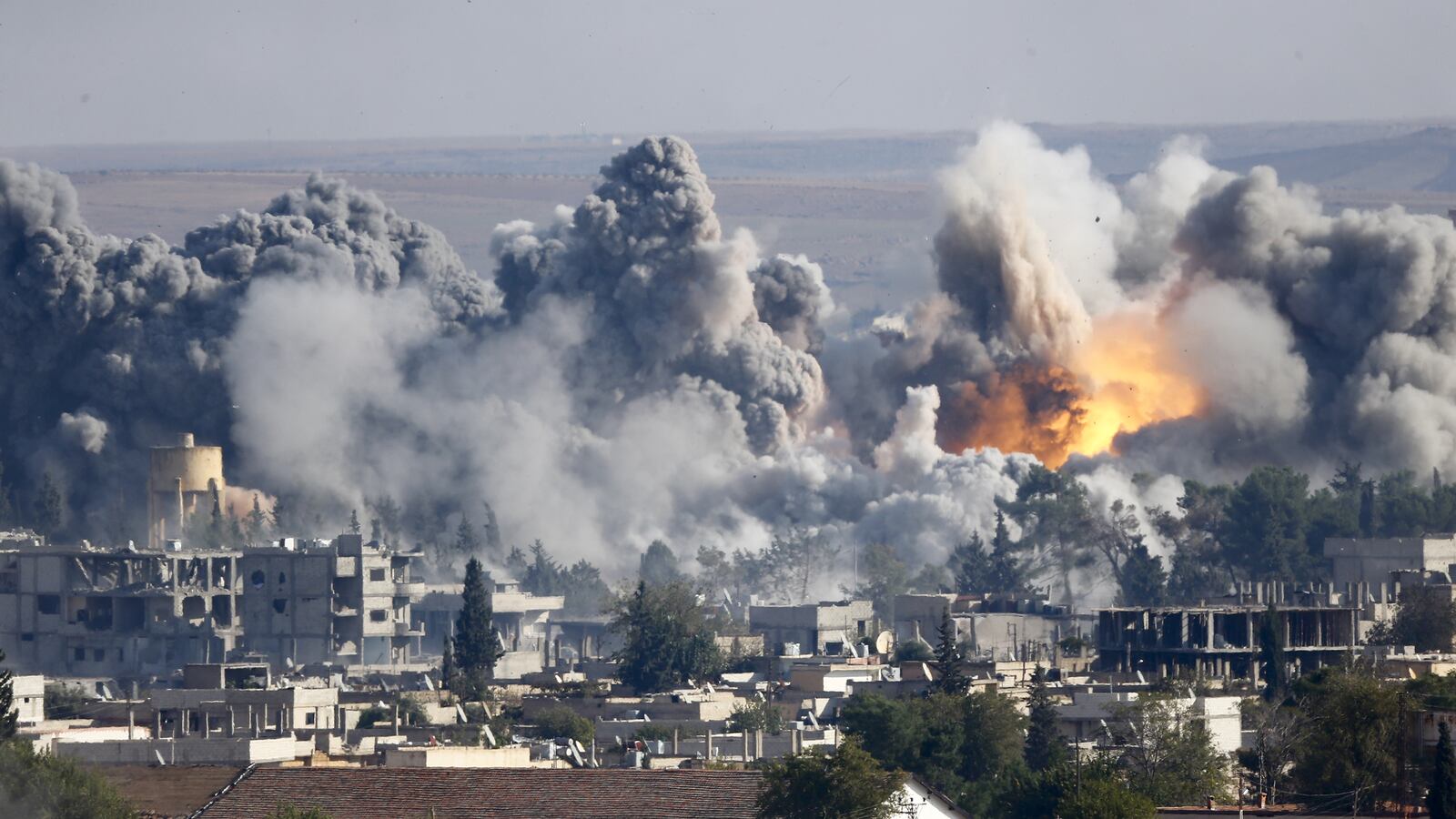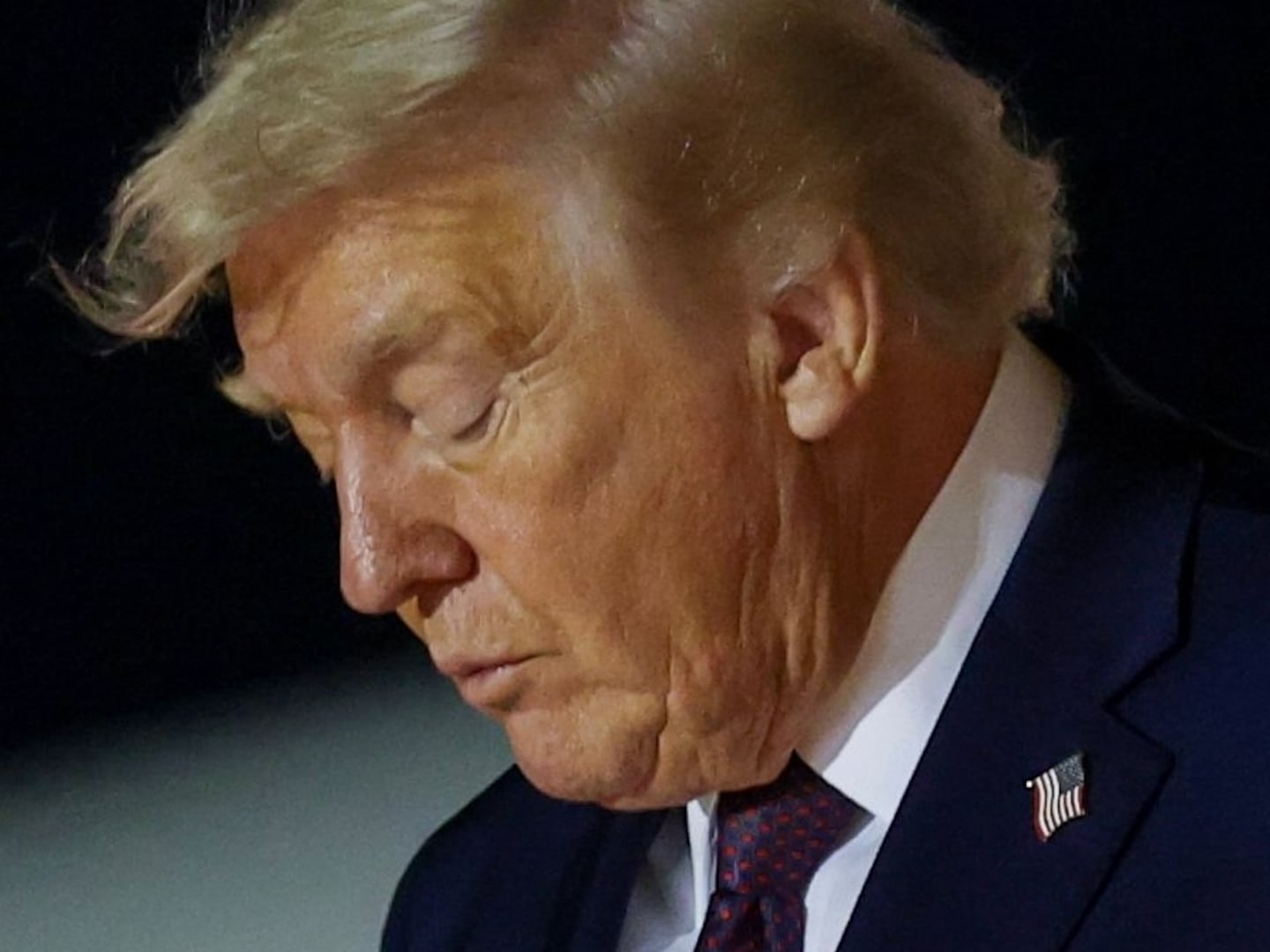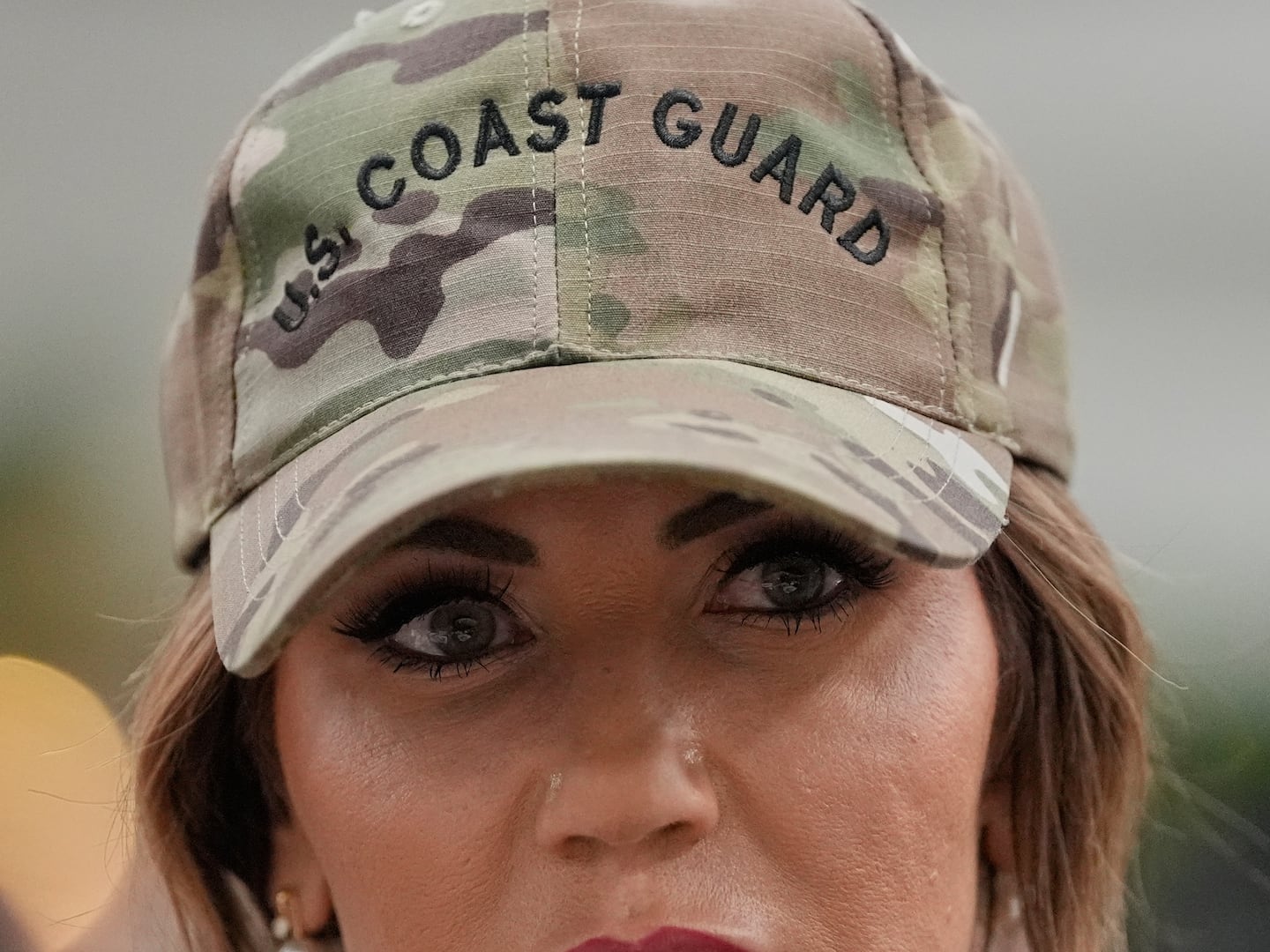The Bashar al-Assad regime has burned Syria with artillery, Scud missiles, barrel bombs and sarin gas. According to the United Nations Human Rights Council, it has committed “the crimes against humanity of extermination; murder; rape or other forms of sexual violence; torture; imprisonment; enforced disappearance and other inhuman acts.” Assad is responsible for the lion’s share of the violence, but criminal and authoritarian elements in the opposition’s Free Army and Islamic Front have contributed to the terror too. And the third force—the transnational Sunni jihadists, particularly ISIS—has murdered surrendered soldiers, opposition activists, journalists and gays, while subjecting religious minorities to forcible conversion or sexual slavery. Syria’s ancient heritage—most famously Palmyra—has been pulverized. Somewhere between 300,000 and half a million Syrians are dead. Almost twelve million have been displaced. None of this is pretty.
At the same time, coexistent with the horror, some Syrian communities are practicing democracy, organizing themselves for practical rather than ideological purposes, debating everything, publishing independent newspapers, running independent radio stations, and producing art, music and writing on a massive scale. This much more positive story is largely unknown outside the country. And that’s one reason why I, a British-Syrian novelist, and Leila al-Shami, a British-Syrian activist, wrote our book Burning Country: Syrians in Revolution and War.
One of the supposed reasons for the American and British invasion and occupation of Iraq in 2003 was to bring democracy to the Arabs. In Syria in 2016 there are over 400 local councils, most of them democratically elected, and most of us in the West have never heard of them.
Revolutionary Syrian voices have been drowned by war noise, inaccurate grand narratives and simplistic assumptions. Currently under full-scale Russian and Iranian military assault, they are now in danger of elimination. We may well end up with Putin’s preferred choice—only Assad and the jihadists left standing. So for the historical record, we should know that another alternative existed, and one of rare intelligence and courage. And for our children’s sake, we need to better understand the escalating Syrian tragedy, and to encourage our leaders to do better.
The extract below is excerpted from the chapter “Militarization and Liberation”:
In the months and years that followed… militarization—more specifically the scramble for weapons and funds—transformed the revolution from a leaderless movement into a cacophony of a thousand competing leaders, from horizontalism to a jostle of hierarchies—though horizontally organized committees and councils continued to work, and their work, increasingly focussed on basic community survival, became even more crucial in the absence not only of the state but sometimes of any infrastructure whatsoever. Furthermore, women’s role in the revolution was increasingly marginalized. Although women—particularly Kurds—did sometimes take up arms, they were largely excluded from the military struggle—a male hegemonic domain—and the civil struggle became much less visible, although no less important. As indiscipline and opportunist criminality tainted the resistance, and later as jihadism flourished, the regime found an excuse for its already steadily escalating violence, and gradually persuaded many at home and abroad that its survival was the least worst option for Syria and the region.
Still, abstract criticisms of the revolution’s militarization miss the point. Syria’s revolutionaries didn’t make a formal collective decision to pick up arms—quite the opposite; rather, a million individual decisions were made under fire. Yassin Swehat puts it like this: “It wasn’t a choice. Look at Homs. When thousands are praying in a square, peaceful, unarmed, and they are shot at, murdered—What do you expect to happen next?”
Violence has its own inevitable momentum. When residential areas are subjected to military attack, when neighborhoods experience the horror of children tortured to death, when young men are randomly rounded up and beaten, soon they will respond. Before moving on to media work, Ziad Homsi, a thin man with an intellectual demeanor, fought in Douma, in the Damascus suburbs: “It was a matter of self-defense. Everyone defended his own home, his own alley. Brigades were formed by the residents of one neighborhood, or by a group of men who worked together. It was a spontaneous process.”
According to Assaad al-Achi, the threat of sexual violence in particular pushed people towards arms. “Syria is very much a conservative, traditional society. Rape is something that will outrage the people. It is very emotional for them… By December 2011 rape had become a standard practice not only in prisons but by the army as well. When it went into towns, the first thing [soldiers] did was go into homes and start raping women in front of their fathers, brothers and husbands.”
But perhaps the greatest of all motivators for the armed struggle were traumatization and the thirst for vengeance. When AbdulRahman al-Jalloud left prison he continued to pursue civil revolutionary activities, but he puts this down to his prior political awareness and contacts. Those young men without such a background responded to their torments in a more concrete manner: “Ninety per cent of detainees picked up arms as soon as they were released. They had very personal reasons. The fighters I know, their houses were burned, their relatives killed, they were on the run.”
In this sense, the militarization was inevitable, and once it had become an undeniable reality, most civil revolutionaries sought to adapt. Some, in the face of the regime’s persistence, rethought their non-violent principles. One was Basel al-Junaidi, living in Aleppo: “We all expected death. I was scared to shower naked in case a bomb dropped. I saw massacres myself. For example, I saw the aftermath of a barrel bomb. I saw human remains scattered in the street; I heard the screaming. I’m trained as a doctor, but I was unable to act. I just stood there, petrified. The West thinks we’re used to this, but we aren’t of course. We’re like anyone else—we use computers and cars, not camels and tents. Look, I’m a secularist, an atheist… A religious person who saw this would want to blow himself up. Even me, if a close family member had been murdered like this, I’d certainly have taken up arms. At the start I was totally against militarization. Now I support it. I realize the regime can’t be toppled by peaceful means.”
In other words, militarization was not solely a natural human response to regime brutality; it also grew from the logical realization that civil resistance was not enough, that the regime would only go if forced. For after months of struggle, not only had sections of the populace failed to mobilize against the regime, some—most of the Alawi community, and the professional/sectarian core of the army—were prepared to actively support it, even to fight and die for it, no matter what atrocities it committed.
Marcell Shehwaro reports: “The violence was more than the people could bear. We couldn’t answer the question how civil resistance would bring down the regime. ‘OK,’ they said, ‘we can stick to the Dignity Strikes, but Bashaar’s being funded from outside. We can’t bring down the Iranian and Russian economies!’ We were offering them nice stories from Egypt while they were burying their dead. They asked, ‘Do you stick to selmiyyeh (peaceful) tactics because they’ll bring us victory, or for the sake of the selmiyyeh tactics?’ We could tell them that the West would see us in a brighter way if we were peaceful, but we couldn’t tell them this would bring victory. We couldn’t tell them, for instance, how civil resistance would free the detainees. Our stand, therefore, didn’t succeed. Every day people died, every single day. So the people armed themselves; they became used to weapons as they’d become used to civil resistance before.”
So the first—and seldom mentioned—component of the armed resistance was civilian. Every adult Syrian male had undergone compulsory military training; it wasn’t difficult, therefore, for terrorized “farmers and dentists” (as US President Barack Obama would call them) to organize defensive militias.
Alongside these volunteers—although volunteer is not the word—army defectors formed the core of the growing anti-Assad force. Very often they acted as the civilians did—they returned to their home towns, where they organized with their neighbors. These soldiers had been ordered to shoot protestors, and very often did, lest they themselves were shot by the intelligence officers at their rear. A combination of guilt, horror and fury propelled many to escape when they could, but perhaps most were killed in the attempt or hunted down in the following days. Usually they took only one weapon with them; sometimes they managed to break weapons out of stores. In every case they had to be prepared to fight to resist capture. Those who sheltered them had to face the fury too. Zaid Muhammad, a Palestinian-Syrian photographer from Aleppo, expresses the existential urgency of the situation: “Soldiers were ordered to kill their compatriots or be killed themselves. It was natural that those who were able to would defect, and the defectors had a right to defend themselves. Should the people have turned these men over to the regime? Of course not. That means the people had to prepare for battle.”
Defections mounted as steadily as the regime’s repression, worst in Homs, where the Clock Square Massacre—as ‘Joly’ described it, “a terrifying, terrible, and a transformative moment,” had tolled an early bell for the death of peaceful protest as a realistic strategy.
That was April 18th 2011. The violence continued to mount. April 25th witnessed a second assault on Deraa. The following months saw major operations in Homs and Lattakia. By June, Sunni residents, especially Palestinians from the Raml camp, were fleeing Lattakia for Sunni-majority areas further inland, or to Turkey. Down the coast at Banyas and its Bayda suburb, where nine regime soldiers had been killed in early April (perhaps in violence instigated by out-of-favor Baathist AbdulHalim Khaddam), another cleansing took place in May. Tel Kalakh, a town in Homs province, was attacked in the same month, its inhabitants forced to flee. Such mass expulsions reinforced the need for self-defense; collective punishment meant it was no longer possible to avoid repression by keeping out of politics.
Then the early June 2011 rebellion in Jisr al-Shughour, in the northern Idlib province, and the regime’s response, was a watershed moment for loyalists and defectors alike. The town had been tense since the regime’s slaughter of 15 workers on May 20th. Then on June 4th, security forces positioned on the roof of the central post office opened fire on a funeral. In response, mourners burnt the building, killing eight officers inside, then seized weapons from a police station. In the ensuing violence, intelligence officers executed soldiers who refused to fire on civilians, provoking a mass defection. A military convoy was ambushed shortly afterwards. More died when the security building was overrun. It was the revolution’s first large-scale attack on Assadist forces.
The army returned with helicopter gunships and tanks, chasing the defectors in the next fortnight from Jisr al-Shughour to the nearby town of Bdama and a newly-sprouted refugee camp at Khirbet al-Jouz. A total of 120 soldiers lost their lives; it’s a matter of dispute how many were killed by revolutionaries and how many by their own officers. An unknown number of civilians were killed too, and at least 10,000 fled across the border to Turkey—the first wave of around two million to follow.

These events hardened positions on both sides. Regime supporters saw them as proof that the civil protests were a mere cover for armed insurrection, and called for an even harsher ‘security’ response. Revolutionaries were outraged at the regime’s open war on civilians, and were inspired by the mass defection, hoping it would be the first of many.
The defection of Lieutenant Colonel Hussein Harmoush was not the first, but was the most widely-noticed and influential of all, introducing a new vocabulary of resistance, specifically the Free Syrian Army label. On June 9th 2011, in what became a paradigm for a thousand similar videos, Harmoush held his ID card toward the screen and declared his defection from the regime’s army to the “ranks of Syrian youth, alongside a number of the Free Syrian Arab Army”. He gave as the new army’s purpose “the protection of the unarmed protestors demanding freedom and democracy,” and condemned the mass killing of civilians, “particularly the massacre at Jisr al-Shughour.” After reminding Assad’s soldiers that “We have sworn in the army to point weapons only at the enemy, and not at our people,” he appealed “…to all the free people of the world: the people of Syria intend to board the boat of freedom and democracy with bare chests and olive branches, so help them achieve this.” He ended his statement by repeating the anti-sectarian slogan “One, One, One, the Syrian People are One.”






